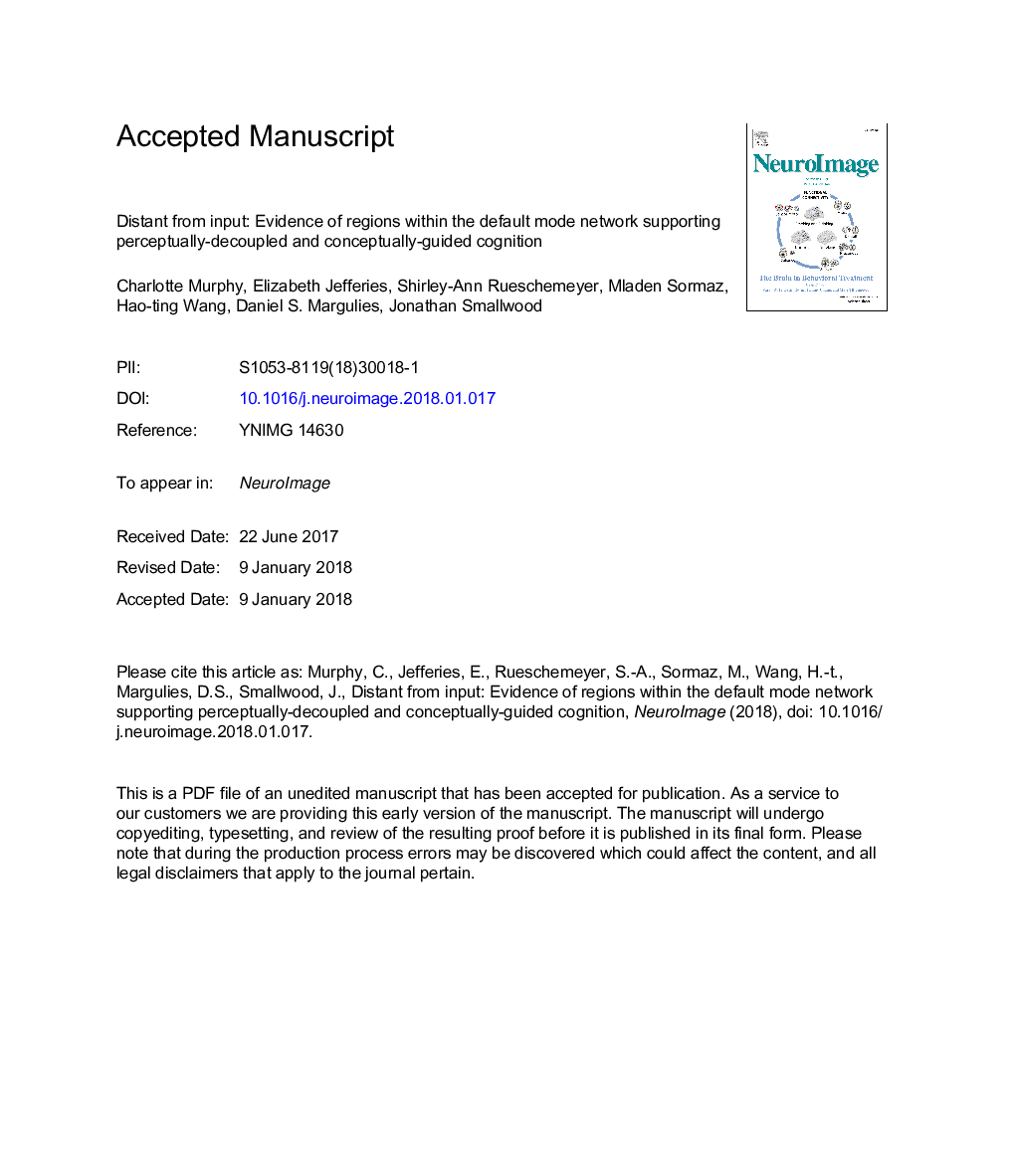| Article ID | Journal | Published Year | Pages | File Type |
|---|---|---|---|---|
| 8687115 | NeuroImage | 2018 | 33 Pages |
Abstract
The default mode network supports a variety of mental operations such as semantic processing, episodic memory retrieval, mental time travel and mind-wandering, yet the commonalities between these functions remains unclear. One possibility is that this system supports cognition that is independent of the immediate environment; alternatively or additionally, it might support higher-order conceptual representations that draw together multiple features. We tested these accounts using a novel paradigm that separately manipulated the availability of perceptual information to guide decision-making and the representational complexity of this information. Using task based imaging we established regions that respond when cognition combines both stimulus independence with multi-modal information. These included left and right angular gyri and the left middle temporal gyrus. Although these sites were within the default mode network, they showed a stronger response to demanding memory judgements than to an easier perceptual task, contrary to the view that they support automatic aspects of cognition. In a subsequent analysis, we showed that these regions were located at the extreme end of a macroscale gradient, which describes gradual transitions from sensorimotor to transmodal cortex. This shift in the focus of neural activity towards transmodal, default mode, regions might reflect a process of where the functional distance from specific sensory enables conceptually rich and detailed cognitive states to be generated in the absence of input.
Related Topics
Life Sciences
Neuroscience
Cognitive Neuroscience
Authors
Charlotte Murphy, Elizabeth Jefferies, Shirley-Ann Rueschemeyer, Mladen Sormaz, Hao-ting Wang, Daniel S. Margulies, Jonathan Smallwood,
